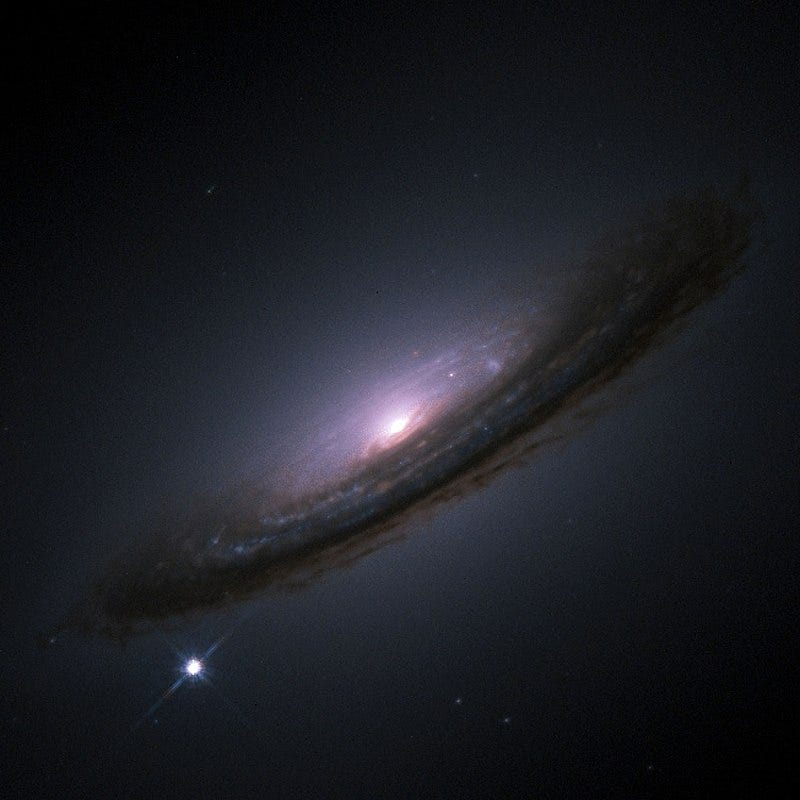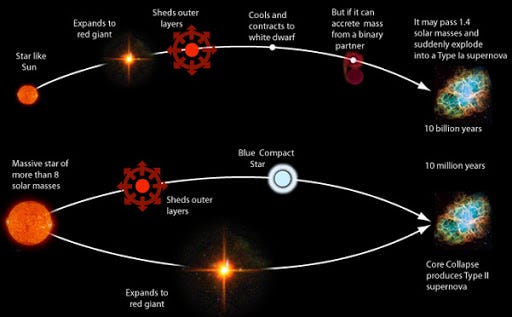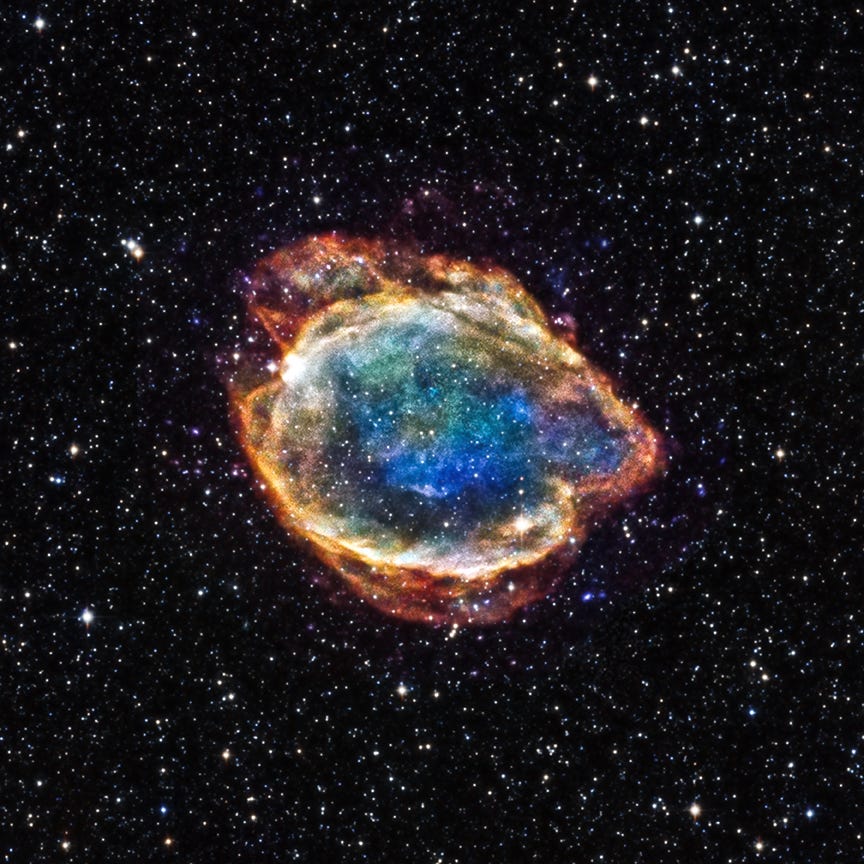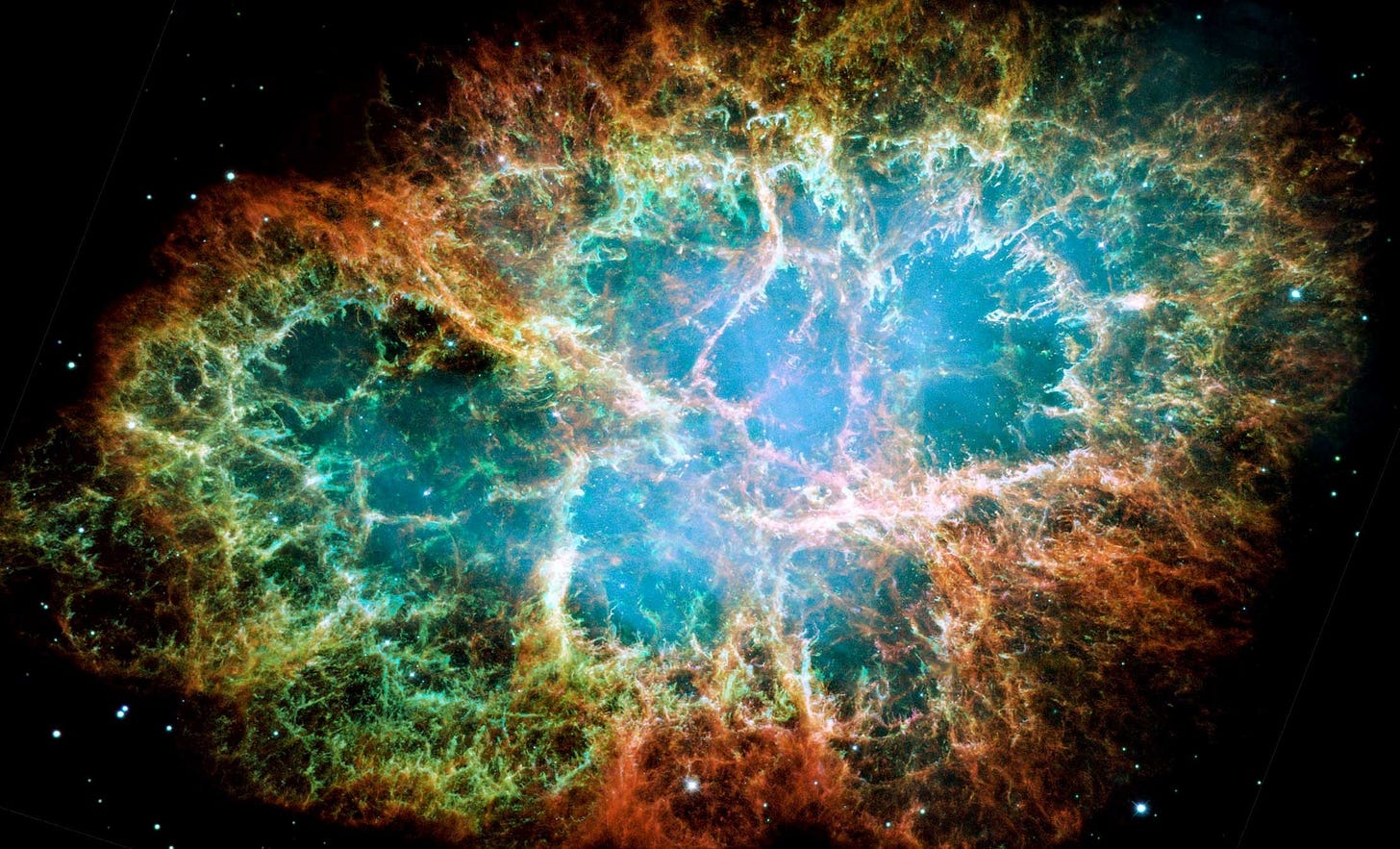We are stardust brought to life, then empowered by the universe to figure itself out and we have only just begun. - Neil deGrasse Tyson
Greetings, fellow scientist
Ever wondered while sky-gazing what lies beyond it? Well, the first thing that we see are those numerous bright points in the sky, dazzling stars made up mostly from normal matter i.e. hydrogen which leads to nuclear fusion. These reactions power the star for millions to billions of years.

But the fate of this normal matter is not so normal. So let us now discourse about how in its last evolutionary stages, the luminous lifetime of a star reaches the climax in a cataclysmic powerful stellar explosion known as Supernova. A supernova explosion is so bright that it can illuminate an entire galaxy and outshine it for several weeks.
How do Stars form Supernovae?
A supernova occurs when a star exhausts the fuel needed for nuclear fusion. This nuclear fusion originates an outward pressure as a counterpoise to the gravitational force acting inwards. Thus, when the pressure drops off, the gravitational force causes the star's core to collapse and to implode, further generating shock waves and ultimately causing the outer layers of the star to explode.
This implode eventuates as an explode only when the star's core exceeds the Chandrasekhar Limit.
Chandrasekhar Limit is the maximum mass of a stable white dwarf star. The currently accepted value of the Chandrasekhar limit is about 1.44 times the mass of the sun.
A white dwarf with a mass less than this limit stays a white dwarf forever.
Types of Supernova
Primarily, supernovae are classified based on the initial star mass as:
Type l Supernova < 8 solar masses
Type ll Supernova > 8 solar masses

Beginning with a more fundamental one:
Type ll Supernova
A Star holding mass up to 8 times the mass of the sun formulates Type ll Supernova. Moreover, type ll supernova also shows a distinctive feature that is the presence of hydrogen in its spectra.
Stars much more massive than our sun can easily surpass the Chandrasekhar mass limit of its core. As the star eventually fuses hydrogen into helium and then results in heavier and stable elements such as carbon, oxygen and iron, nuclear fusion no longer takes place.
Consequently, the star's core collapses and bounces off, emerging as a supernova. The following residuum is either a Neutron Star or a Black Hole which is determined by the star mass.
A Neutron Star is an excessively dense as well as compact stellar object containing 1.4 times the mass of the sun within a diameter of only 20 kilometres.
Astrophysicists presume that stars comprising of mass around 20 - 30 solar masses collapse to form a black hole. Due to the star's enormous mass confined in a smaller space, gravitational force becomes significantly more powerful and doesn't let the light reflect, hence appearing like a black hole.
Type I Supernova
Stars getting incarnated into supernovae but holding initial mass below 8 solar masses are named Type l Supernovae. After drying up their fuel, small scale stars in their final stages of life emerge as white dwarfs since their core mass doesn't exceed the Chandrasekhar critical mass limit.

White dwarfs are dense stellar objects containing gases mostly like carbon and oxygen.
White dwarfs are about the size of our earth, however, carrying the mass of the sun. White dwarfs have inadequate energy to initiate a runaway fusion reaction. To acquire the essential energy and mass, it sets up a binary system in which a white dwarf starts orbiting another white dwarf or giant. Then, by accretion, it accumulates more gas and dust particles.
Gradually, the main objective to attain the carbon fusion temperature is accomplished. Carbon fuses into heavier elements, bringing about an increase in its mass and consequently outdoing the critical core limit to form a brilliant supernova.
Further, supernovae are categorized upon the basis of their light curves.

Supernovae are worth watching plus worthwhile for humans as they are the essential source of heavy elements such as gold and uranium, which develops when iron fuses in this massive energy blast.
This is the scenario of those bright points sparkling in the sky that end their lives in the most beautiful explosions in the universe. Almost all the matter that you are made up of was made in these explosions, thousands of light-years away. So when you look up at them, always feel grateful as they are largely responsible for bringing consciousness down here in you.




Excellent article
Great 🔥👌👌